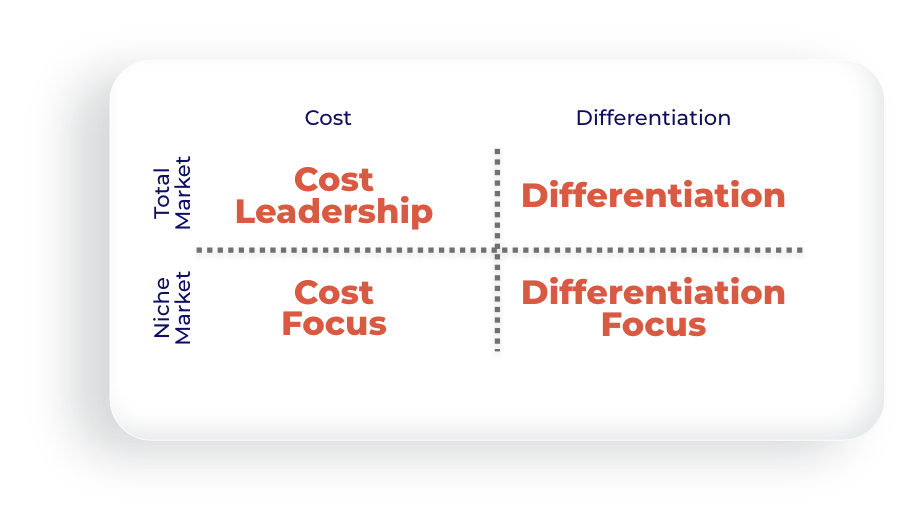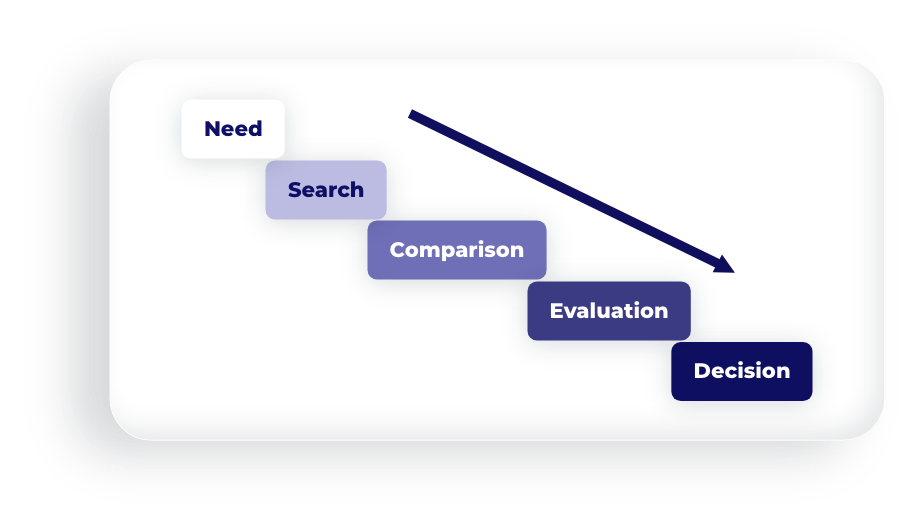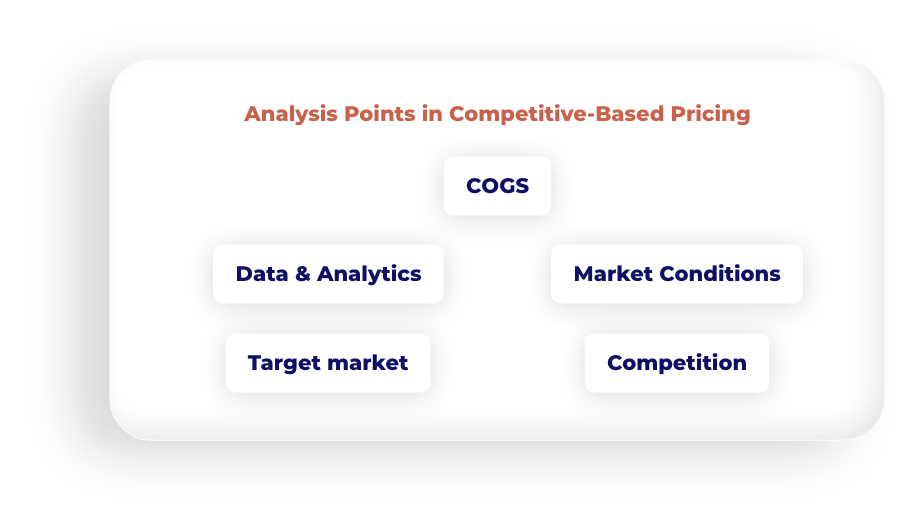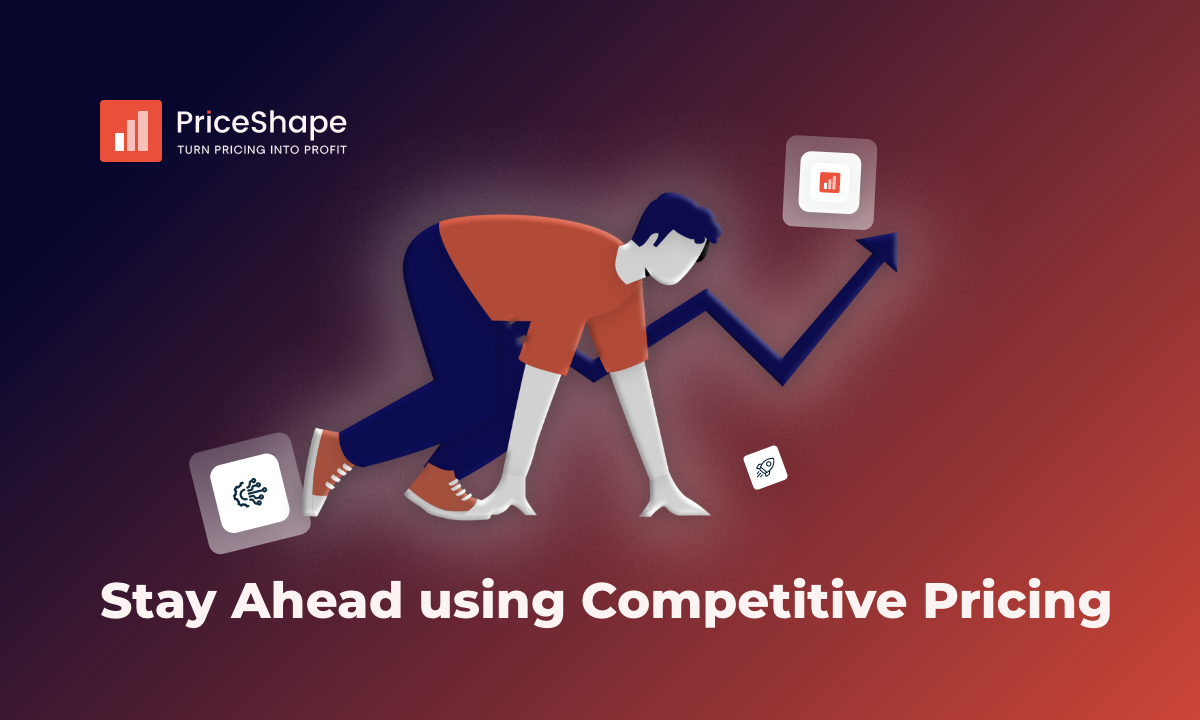Stay Ahead using Competitive Pricing
Learn how to become the strongest player in your market using Competitive Pricing. Find out what this pricing strategy is and how to implement it.
Competitive pricing is the process of setting the price of a product or service based on the costs of similar products or services offered by competitors. It involves analyzing the prices of comparable products or services in the market and adjusting your prices accordingly to stay competitive and attract customers.
When it comes to setting a competitive price, there are several factors to consider, including:
- The cost of goods sold (COGS) includes the cost of materials, labor, and other expenses associated with producing the product or service.
- Market conditions: This includes the economy's overall state and the specific market conditions in which the product or service will be sold.
- The target market: Knowing the target market and their willingness to pay for the product or service will help you determine the right price.
- The competition: Analyzing the prices of similar products or services offered by competitors will give you an idea of the going rate in the market.
- The company's objectives: The company may have different goals like maximizing profit or market share or being the low-cost leader in the market

As a market enthusiast, you've probably come across Michael Porter (American professor). He developed the theory: "Michael Porter's Generic Strategies Model."
As the above image shows, there are several ways to become competitive. In this case, Competitive Pricing is about looking at the left side, which deals with either being a cost leader or cost focused.
In particular, we recommend looking at points 1-5, as it can help to consider where you are in Michael Porter's generic strategies.
Start creating your strategy and become more than just a competitor but also a strategist
It's important to note that setting a competitive price is not just about undercutting the competition; it's also about providing value to the customer. Customers are willing to pay more for a product or service they perceive as having more value.
Therefore an excellent model to use here is the consumer's buying process, where the focus is to identify and adapt from A to Z, which means how the consumer goes from a need to make a decision where you end up being the order winner in the game of other competitors in your industry.
Identify and adopt
The first thing to be aware of is your consumer's buying process and what considerations they make before making a purchase.

Here, price is a factor that a consumer evaluates in evaluating alternatives. Few differences in price between competitors can make you even an order winner or order loser.
Examples of implementations for competitive strategies:
Many market specialists' most prominent wish is: "Maximizing Profit Through Competitive Pricing: with strong differentiation pricing strategies”.
When pricing your products or services, it's essential to consider the competitive landscape.

By understanding the prices of similar products or services your competitors offer, you can make informed decisions about pricing your offerings. However, simply matching or undercutting the competition isn't always the best strategy for maximizing profit. This post will explore strategies for implementing competitive pricing and how to make the most of this powerful tool.
- As mentioned before, start to understand your cost of goods sold (COGS): The first step in implementing a competitive pricing strategy is to understand the cost of producing your products or services. By understanding your COGS, you'll be able to determine a price that allows you to profit while still being competitive.
- Analyze market conditions: The state of the economy and the specific market conditions in which you operate will also play a role in determining your pricing strategy. For example, if the market is saturated with similar products or services, you may need to lower your prices to attract customers. On the other hand, if the market is growing or in high demand, you can charge a premium for your products or services. Likewise, how consumer confidence is. In many countries, it dropped dramatically after the many crises that occurred in Europe. People begin to save, and therefore, consumers start to focus on the best prices. Data on country consumer confidence can be found in various national databases and is a good tool for understanding market conditions.
- Understand your target market: Knowing your target market and their willingness to pay for your products or services is crucial in determining the right price. For example, if your target market is price-sensitive, you may need to lower your prices to attract them. However, if your target market is willing to pay more for high-quality products or services, you can charge a premium.
- Analyze your competition: By analyzing the prices of similar products or services offered, you'll get an idea of the going rate in the market. This will help you determine if you need to lower or raise your prices to be competitive.
- Use data and analytics: By collecting and analyzing data on customer behavior, you can gain valuable insights into how customers perceive your products or services and respond to pricing strategies. This will help you make more informed pricing decisions.
In conclusion, implementing a competitive pricing strategy is about finding the right balance between profitability and competitiveness. By understanding your COGS, analyzing market conditions, understanding your target market, analyzing your competition, and using data and analytics, you can make informed decisions about pricing that will help you maximize profit while remaining competitive.
With this guideline, you will become more than just a competitor but also a strategist in your market.



